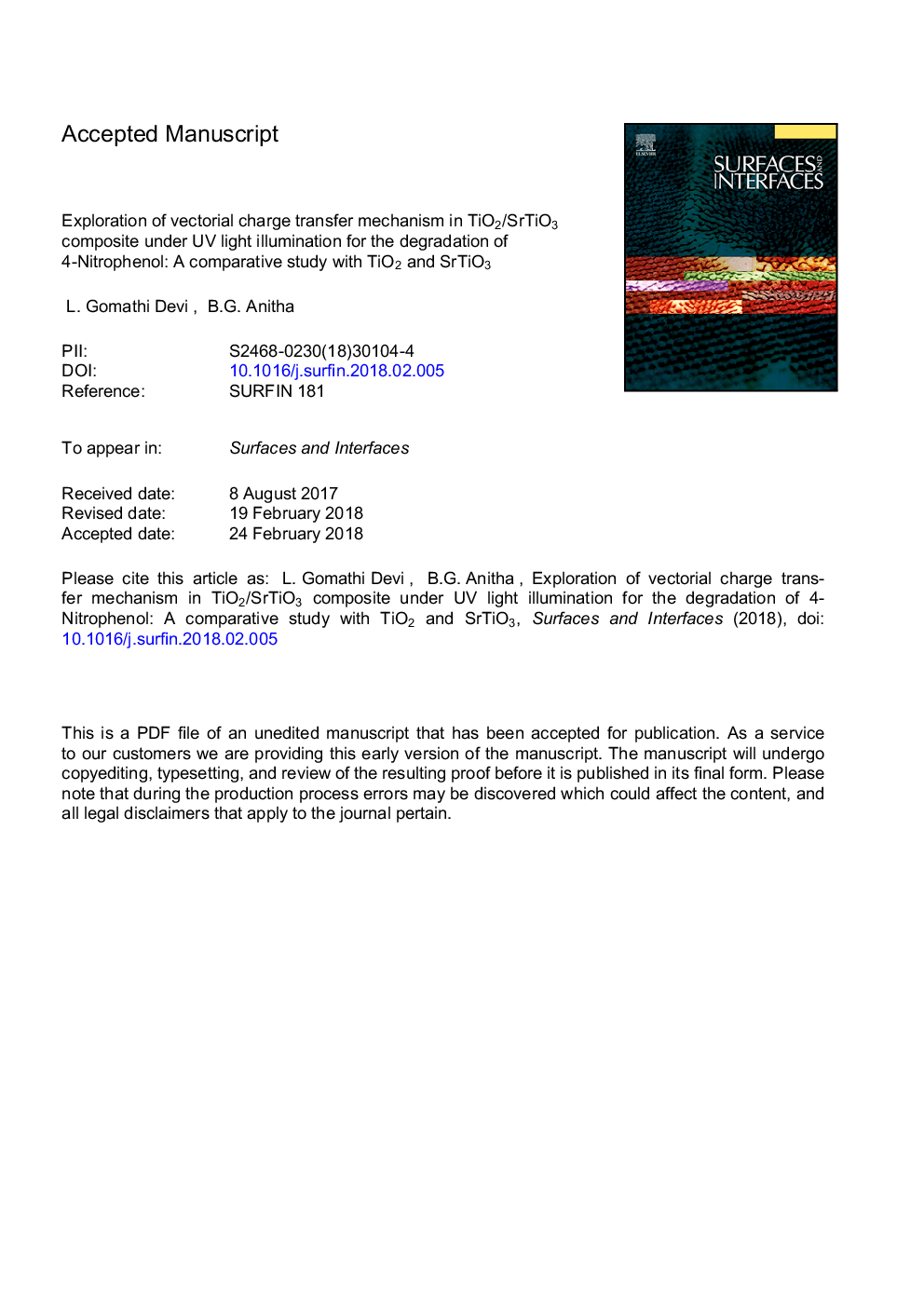| Article ID | Journal | Published Year | Pages | File Type |
|---|---|---|---|---|
| 7001146 | Surfaces and Interfaces | 2018 | 32 Pages |
Abstract
TiO2, SrTiO3 and SrTiO3/TiO2 composite catalysts were synthesized by sol-gel method. The PXRD results show the presence of both anatase TiO2 and cubic perovskite SrTiO3 in the composite. The UV-visible absorption spectra confirm the bandgap to be wide and it is in the range of 3 to 3.2â¯eV for all the three samples. The efficiency of all the photocatalysts were evaluated for the degradation of 4-Nitrophenol (4-NP) under UV light irradiation. The higher photocatalytic activity of SrTiO3/TiO2 composite was correlated to its improved photogenerated charge carrier separation efficiency which arises mainly due to the potential energy differences between the conduction band (CB) edge of SrTiO3 (-4.22â¯eV with respect to vacuum) with that of CB edge of TiO2 (-4.27â¯eV with respect to vacuum). Similar differences are also observed in the valancy band edge positions. These small differences in the band edge positions leads to a potential gradient at the interface facilitating vectorial transfer of charge carriers, thereby increasing the lifetime of the photogenerated electrons and holes. Further, a significant enhancement of catalytic activity was observed when the degradation reaction is carried out in presence of electron acceptor such as H2O2 and ammonium per sulfate.
Related Topics
Physical Sciences and Engineering
Chemical Engineering
Colloid and Surface Chemistry
Authors
L. Gomathi Devi, B.G. Anitha,
